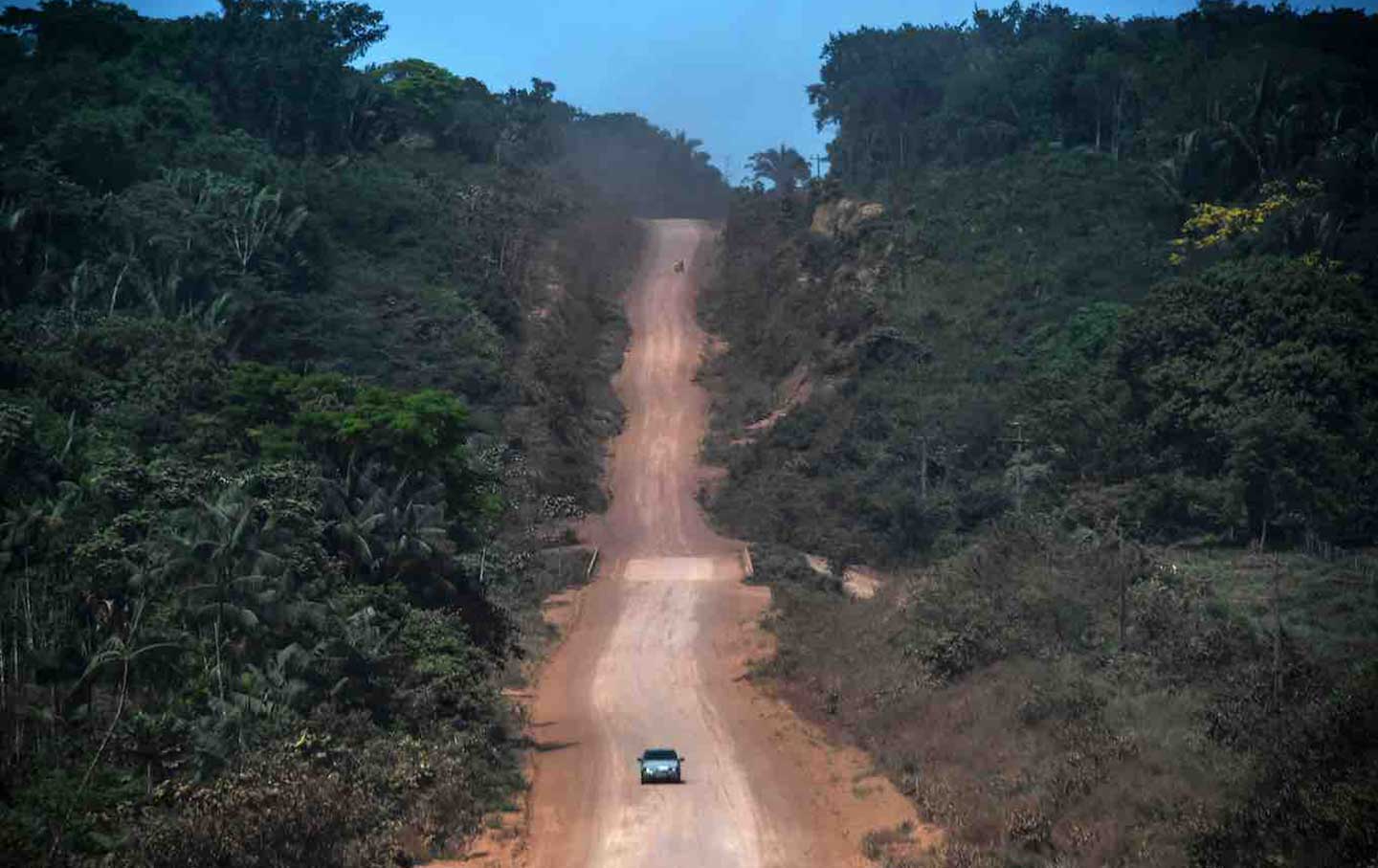An Urgent Witness, Not a Passive Bystander, to Climate Catastrophe
Conversations with Jane Hirshfield, poet of the present moment.
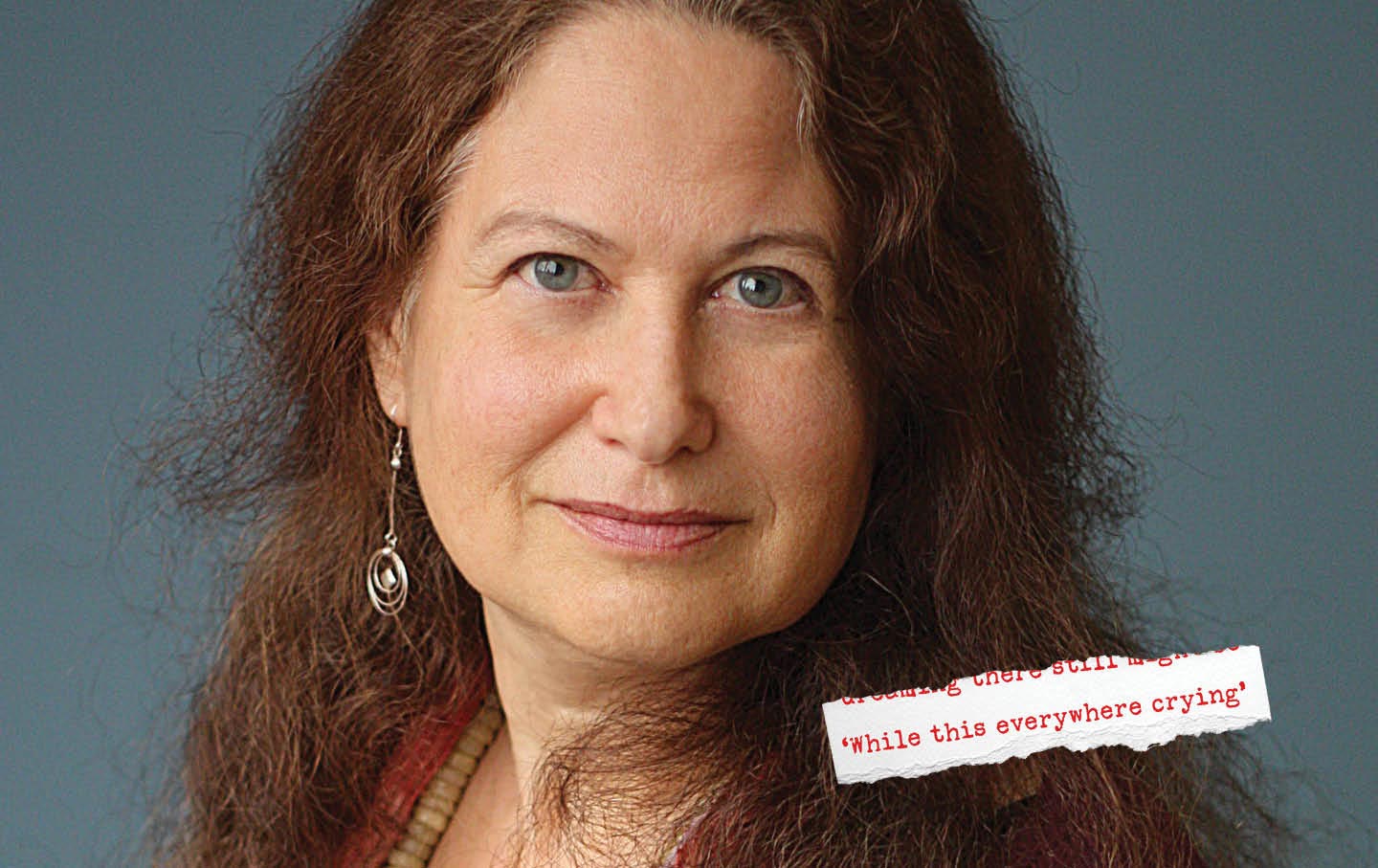
At first there was more to eat, then suddenly less.
—“Aubade Now of Earth” (2022)
I was on my way to visit Jane Hirshfield—but first I had to get to Stinson Beach without driving off a cliff into the pitch-dark Pacific. The fog was thick along the high, snaking coastal road at the base of Mount Tamalpais, and the headlights of my rented Prius (a fraudulent signal of a personal virtue I’ve never possessed) weren’t cutting it. With each curve I hugged the mountain, keeping as far as possible from the abyss of mist, rock, and watery vastness. It was, I admit, a little scary. Somehow I managed to stay on the road.
Soon enough, tiny Stinson emerged out of nowhere, its few streetlights making circles in the fog. Being late, I found my room key in an envelope taped to the office door of the little motor inn a short walk from the beach. I needed sleep, but my nervous system was still out on the cliffs.
Jane Hirshfield and I have corresponded occasionally for many years—since the 1990s, when I was a twentysomething editor at a national magazine—and we had met in person once before, too briefly, at a book festival in 2015. This time, in late September 2022, I was visiting friends in the Bay Area, and I had reached out to Jane beforehand to see if she’d be at home in Mill Valley. She said she would, and that she’d be delighted to get together some afternoon while I was there. She suggested we meet at the horse stables in Muir Beach and then walk the trail to Green Gulch Farm Zen Center. As a fellow Zen Buddhist practitioner (though with nowhere near her five decades of experience, including three years of monastic training), I’d heard about Green Gulch, which is affiliated with the San Francisco Zen Center, and was eager to see it. So that was the plan: We’d walk, talk, maybe sit in the Green Gulch garden, and catch up.
I had no assignment and wasn’t pursuing one. This was personal. I had read Jane’s recent volume, Ledger (2020), and some of the new poems in The Asking: New and Selected Poems (then still a year from publication), and I was struck—no, I was startled, unsettled, caught, seen—by the increasingly grave urgency and grief of her clear-sighted ecological witness.
That next morning in Stinson, before meeting Jane in the afternoon, I woke up early and headed down to the water. It was overcast and pleasantly cool, not socked in like the night before. Still, the marine layer hid all but the first few hundred feet of the mountain. The beach at Stinson is long and wide, in a broad arc along Bolinas Bay, and at the southeast end, where I was, the center of town is set back at a respectful distance. Aside from a few early swimmers far up the beach, I was alone with the sand and the shorebirds and the small, quiet surf. A long-billed curlew posed for me on its twigs-for-legs in the inch-deep foam of a spent wave. A group of marbled godwits (as I later ascertained) took flight low above the water and landed a few yards out in front of me. A thick flock of gulls huddled on the sand. I walked the half-mile or so down to the photogenic boulders at the end of the beach, below the coast road I’d driven, beyond the town and any buildings. The wet, immaculate sand reflected the early light, and the big rocks emerged from its surface as if they’d grown from it.
The ocean itself, calm and metallic gray under the blanket of low cloud, went on absorbing the atmosphere’s excess heat and carbon dioxide—warming, rising, acidifying, silently and invisibly, so as not to alarm the tourists like me.
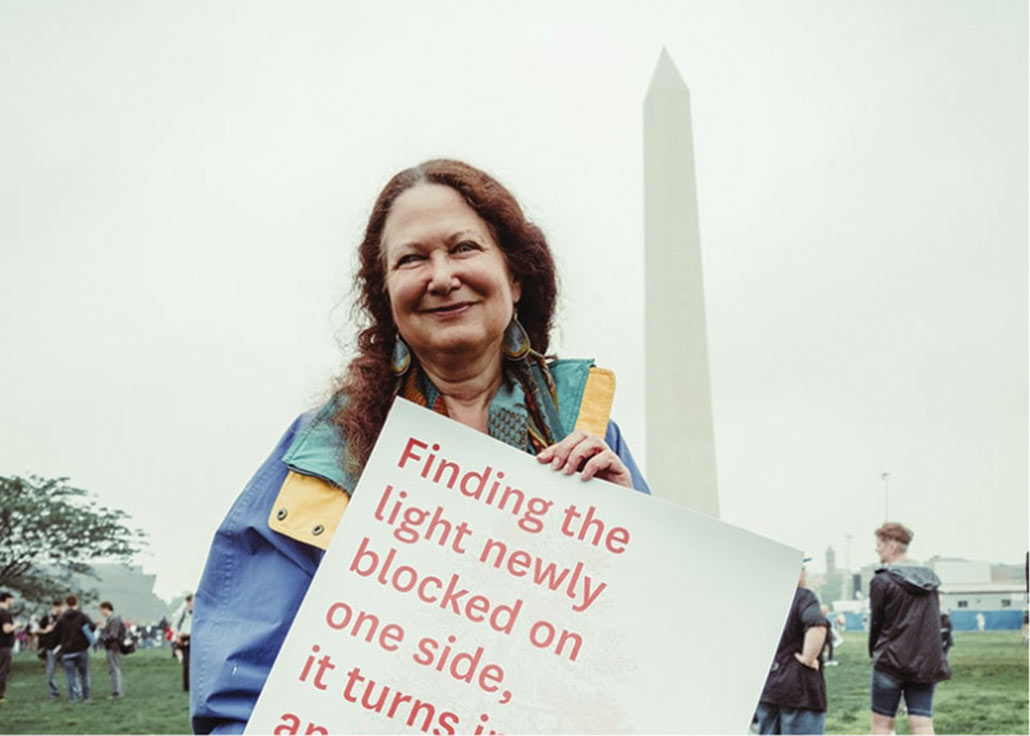
Ledger begins with a poem called “Let Them Not Say”—the poem’s “them” left somewhat ambiguous, whether it’s the deniers of various sorts, the oblivious, the cynical, or, perhaps in the end, posterity, incredulous and judging:
Popular
“swipe left below to view more authors”Swipe →
Let them not say: we did not see it.
We saw.Let them not say: we did not hear it.
We heard.Let them not say: they did not taste it.
We ate, we trembled.Let them not say: it was not spoken, not written.
We spoke,
we witnessed with voices and hands.Let them not say: they did nothing.
We did not-enough.Let them say, as they must say
something:A kerosene beauty.
It burned.Let them say we warmed ourselves by it,
read by its light, praised,
and it burned.
The spare lyricism here, a piercing directness and clarity, is pure Hirshfield. And yet there’s something else, too, a stark reckoning, a depth of anger, an incalculable grief, an ending, an abyss. This felt new to me.
I’m no stranger to the mood of grief and doom that has settled like smoke-haze over so many of us who pay attention to climate science and our ecological and political catastrophes. As a journalist and an activist, having fought pipelines and blockaded coal trains, I’ve stared straight into that abyss for nearly a decade and a half. I know despair; we’re on intimate terms, and I won’t be shamed for it. (We’re told it’s a sin.) You can’t run from it—you may think you can, but it catches up with you.
In the months before my trip to California, I’d been wrestling hard with this mixture of climate and political despair, and I shared my thoughts with Jane before my visit. Her reply was typically generous.
“I actually believe in despair,” she wrote in an e-mail, “though it’s possible that what I mean by that word is not what the despair-condemners mean by it. They mean: the collapse to nihilism, paralysis, Nero-ism. I mean something like: admit the abyss is real and truly may swallow us all, because only then will we do whatever we can to prevent it. Perhaps this isn’t despair, in the strictest sense. Perhaps despair is a full giving up. But for me it feels like despair: an unbearable pitch into falling and darkness. In my experience, only the full admission into heart and mind of the depths of foreseeable collapse is sufficient as a spur to not giving up. And to not being complacent, to not assume that others, somehow, will take care of the problem for us.”
There’s another poem in Ledger, in that volume’s final section, in which Jane transmutes those sentiments into art. Called “Ghazal for the End of Time,” it was inspired by Olivier Messiaen’s Quartet for the End of Time—his disquieting yet somehow enrapturing piece for clarinet, piano, violin, and cello—composed and first performed in a Nazi prison camp. The poem’s first lines, Jane told me in a later e-mail, “spoke themselves” into her ear while she was out walking on the streets and trails near her house below Mount Tam. “As soon as I heard them,” she wrote, “I knew the poem would take the form of a loosened ghazal, with its couplets and repeating-word rhymes.” Here it is in full:
Break anything—a window, a piecrust, a glacier—it will break
open.A voice cannot speak, cannot sing, without lips, teeth, lamina
propria coming open.Some breakage can barely be named, hardly be spoken.
Rains stopped, roof said. Fires, forests, cities, cellars peeled open.Tears stopped, eyes said. An unhearable music fell instead from
them.
A clarinet stripped of its breathing, the cello abandoned.The violin grieving, a hand too long empty held open.
The imperial piano, its 89th, 90th, 91st strings unsummoned,
unwoken.Watching, listening, was like that: the low, wordless humming of
being unwoven.
Fish vanished. Bees vanished. Bats whitened. Arctic ice opened.Hands wanted more time, hands thought we had time. Spending
time’s rivers,
its meadows, its mountains, its instruments tuning their silence, its
deep mantle broken.Earth stumbled within and outside us.
Orca, thistle, kestrel withheld their instruction.Rock said, Burning Ones, pry your own blindness open.
Death said, Now I too am orphan.
“That poem frightened me profoundly—especially the ending,” Jane wrote to me not long after I saw her in California. “I think it the darkest poem I’ve ever written.”
“I’ve long loved Messiaen’s piece,” Jane wrote. “I find it overpoweringly beautiful. But not as Messiaen described his intentions for it. He claimed that he was praising the radiance of God, perceptible even from prison camp. But I hear in it infinite grief, a grief hauntingly beautiful, not transcendence. I am perhaps wrong. (I wonder how you yourself hear it?) But a person hears what she does.”
I asked her about that grief. She likened it to the Latin lacrimae rerum (“tears of things”) or the Japanese mono no aware (“pathos of things,” or the awareness of transience). “Perhaps it is only my not-enlightened human disposition,” she wrote, “though it’s also the disposition of Greek tragedies, and of Japanese poems: a beauty unaccompanied by grief, impermanence-knowledge, mortality, seems to me almost instantly saccharine.”
“My ‘end of time’ in this poem,” she explained, “borrows Messiaen’s phrase for a different use and meaning. His was theological (and, I can’t help but think, personal, given its circumstances of composition). My poem has in mind only the crisis of the biosphere, the possibility that the world you and I were born into might be coming to a close.”
I told her the poem’s darkness is indeed unlike anything of hers I’d read before—and yet, I also sensed something life-affirming in it. There’s an affirmation, even defiance, perhaps a kind of human solidarity, in her resolve to face her fear and grief and turn it into art: a hard acceptance and a fierce resistance. “Rock said, Burning Ones, pry your own blindness open”—the monosyllabic force of the verb “pry,” like a sudden, almost violent rupture. “Death said, Now I too am orphan”—the final, dying downbeat of the last half-rhyme, the sound of fate, impermanence, falling. All as if to say: “Resist, you fools!—now!—in this one moment that is all you have.” Even as, in the end, death itself is swallowed by eternity.
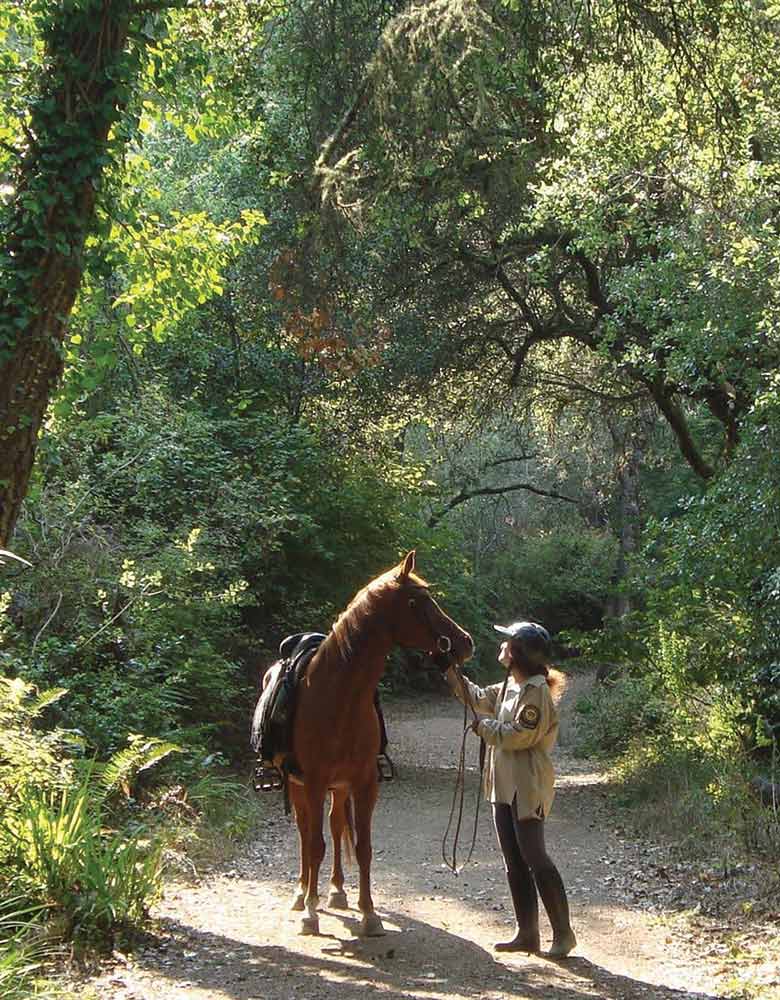
Jane Hirshfield is not ordinarily grouped and anthologized with poets of political engagement and social witness. Among the most distinguished living poets in the English language, she’s best known for her quiet, contemplative attention to the natural world, to the details of daily life; for finding the profound in the mundane, the mystical (but never supernatural) in the materiality of existence—an open-hearted relationship to the large and small that is both broader and more vulnerable than the labels “Zen” and “Buddhist” can encompass. (“I don’t want to be a ‘Zen’ poet, only a human poet,” she told me.) Her verse is cerebral and sensual, somehow both philosophical and anti-philosophical at the same time. Abstract concepts and questions are constantly met with and grounded in tangible, earthy, embodied reality, so that a single line might enact the tension or balance, like dance or musical counterpoint, between the intellectual, physical, and emotional. All with the clarity of sun on snowmelt.
Jane was born and raised in New York City, yet her earliest memory—“now a memory of a memory of a memory,” she told me—is of a trip to the countryside, maybe her first, when she was about 2 years old: “lying in the grass with a tall, dark hedge behind me, blue sky up above, and the taste of a blackberry in my mouth.” It’s like an uncanny ur-image of a Hirshfield poem, an awakening before words into what would be her life’s work, her poetry of the present moment.
Popular
“swipe left below to view more authors”Swipe →And yet, Jane pointed out to me when I saw her again in June—as we sat on a porch in upstate New York and looked through the bound proofs of The Asking—political and social awareness has never been absent from her work. “You can see the eras of my life in this book,” she said. “It shows the continuities and the evolution.” And among those continuities, she went on, “although it has grown more into the foreground over the years, are these broader concerns. I have never written a book that didn’t acknowledge war, hunger, inequality, somewhere in it.”
What, then, are Jane Hirshfield’s politics? I asked her that question as we sat talking about the new book.
“My politics are the politics of non-separation,” she said. “If I could find a way to move us all out of meaning anything other than all of us when we say ‘we,’ that’s my politics. The politics of classic Mahayana Buddhism: lessen suffering. Whatever will make for less suffering, whatever will make for less tribalism, and the sense that any person’s abundance comes only at someone else’s expense. My belief is that when people experience their lives as abundant and not under threat, our natural response is generosity, is sharing, is ‘Have you eaten yet?’—and that this is in us as a species, to behave badly under threat and well when we have a sense of abundance. The politics of that have to do with: How can we cultivate a sense of abundance which is not tied to the false separation of ‘I own this’?
“And, you know, human beings have lived this way,” she continued—“it’s not out of our repertoire to live with a sense of shared abundance. Our current culture doesn’t cultivate that very well. Our current culture creates a great fearfulness, and I feel like it is a generous accident of my own life that I am not trapped inside that. If I had been born somewhere else under different circumstances, I might not be able to feel this.”
We had talked about my own activism at the more confrontational edge of the climate justice movement, and I was curious to know how she views her relationship to radical politics and social justice movements.
“I came of age during the Vietnam War protests,” she wrote to me after our conversation in New York. “I took a train to the D.C. Mall and sat with others my last year in high school. In college, I fasted a week to protest the bombing of Cambodia and sent the money [I saved on food] to some fund, meant to help. I always thought a life could only be felt honorable if you’d spent a night in jail for reasons of justice. My life is not yet honorable, by that measure.”
“I know how much I am not doing—I mean, politically,” she told me. “I write a lot of postcards these days, to help get people registered to vote.”
In fact, she does a good bit more than write voter postcards (important work in itself). In 2017, she founded Poets for Science to coincide with the March for Science in Washington, D.C.—and read her searing poem “On the Fifth Day,” about the silencing of environmental scientists (which had just run as a full page in The Washington Post) to a crowd of more than 40,000. Poets for Science is still “going gangbusters,” she told me, and is still being installed in universities and various institutions around the country, including the National Academy of Sciences in D.C. In May, she participated in a Nobel Science Summit on countering misinformation and restoring public trust in science. “I don’t think that my Poets for Science installation counts as ‘radical’ politics,” she told me. “But the mutual support heartens the scientists.
“Not a jail cell, not silence,” she noted in self-judgment. “I’m grateful for those who are more radical in their actions. My way of working for change is quieter.”
I asked if she ever feels enraged. She does, she assured me. Recently, she had felt “big lightning bolts of anger” at the injustices and cruelty of the Supreme Court’s decisions—and yes, rage. “What I actively try not to do is stay in that state continually. I know that I’m not the one now at the direct receiving end. If I were, it might be different. I’ve spent a lot of the past six years feeling huge anger. Standing in the world’s lightning, with everyone else. Not yet taking the direct hit, while knowing others do. Figuring out what to do next, what to do more.”
On that porch in New York, the smoke of Canadian wildfires in the air, we came back to the crisis of the biosphere. I told her that I don’t think we will ever do what actually needs to be done, something like revolution, until enough people are desperate enough—a frightening thought. This led us back to our conversation about climate and political despair, and the fear of it.
“Two or three years ago,” Jane said, “I noticed there was this great turn, and people who’d been talking about how bad things are getting decided they had to start talking and writing about hope.”
Yes, I said, I had noticed. It bothered me.
“Well,” she said, “their fear of despair is honorable and justified, because what they’re afraid of is the teenagers who are killing themselves.”
I get that, of course, especially as a parent of a 19-year-old and a 23-year-old. What I resist, I told her, is the culture of browbeating optimism that has overtaken large parts of the climate movement. It does young people no favors in the end, because it avoids the necessary reckoning with reality.
Yes, she nodded. “That can be kind of obnoxious and programmatic.”
She paused. “I always want to be on the side of understanding where people are coming from,” Jane said. And then the conversation took an unexpected turn.
“There was one time in my life,” she said, her soft voice getting softer, “when I was in—and I only realized it when I had come out; it had no name when I was in it—a full-bore, clinical depression. And it was long-lasting, and it was perilous. This was in 1982—my first great love ended things abruptly, and it threw me over a cliff. I was there for a long time, and I got out, and I’m not sure—I don’t know if I would survive if I ever had to go there again.
“I’m deeply glad that I have experienced it,” she said. “Because, first of all, it made me a larger human being, just in terms of what I’ve experienced. And now, if someone else is in the abyss—I know that. It’s not just words to me. Because I lived there.
“This all has to do with people who are pushing despair away,” she continued. “Perhaps too quickly and superficially, because they’re afraid to actually feel it. I think it’s very important to feel it—and it’s very important to not kill yourself.”
Those last words she spoke quietly, slowly, emphatically.
“This is still a beautiful world,” she said. “It’s not yet a Cormac McCarthy nightmare.”
Although large parts of it will be, I said. Some places already are.
“Oh, yes,” she said. “Some places already are.”
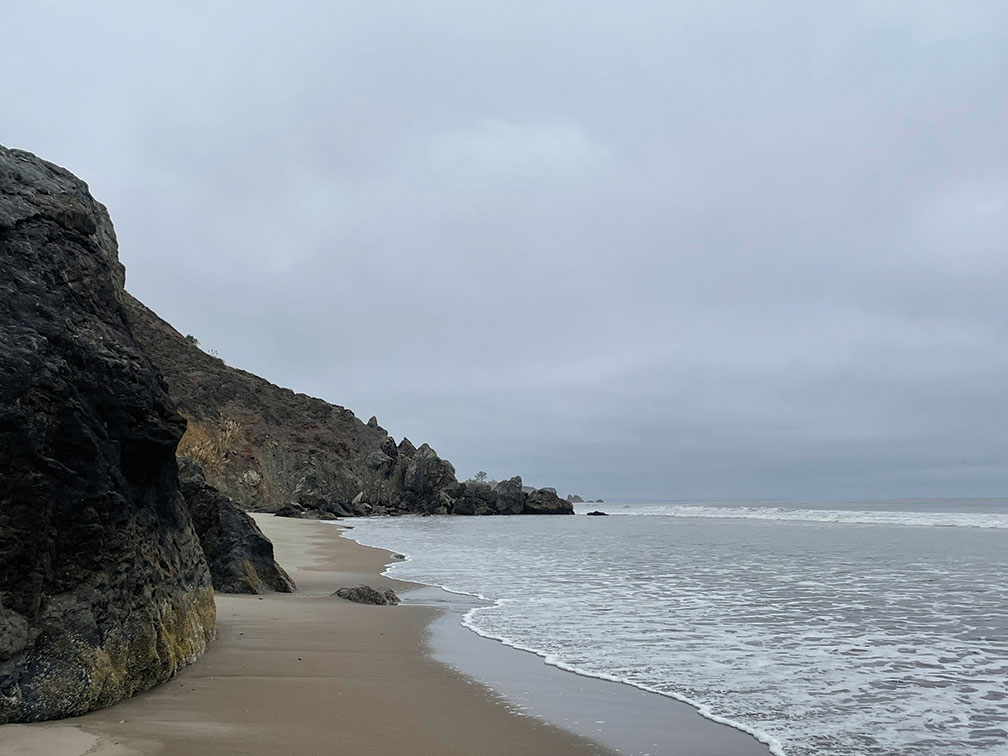
I didn’t tell Jane this, because I don’t talk about it much, but I’ve been there, where Jane was, in recent years—all the way there. And I fear it. I’d rather go to prison, or die, fighting fossil fuels and fascists than to go back to that place—to feel the vertigo, the over-the-cliff, into-the-abyss free fall.
Among the new poems in The Asking is one titled “Manifest,” in which Jane writes: “To that which is coming, I say, / Here, take what is yours.” And she goes on to address the “what-is-coming” (“glaciers depart, insects quiet, seas rise”) as if addressing a person: “But forget, if you can, what-is-coming… / one small handful of moments and gestures…. // Let stay, if you can, what-is-coming, / one or two musical notes….” Until the poem ends:
Leave one unfraudulent hope,
one affection like curtains blown open in wind,
whose minutes, seconds, fragrance,
choices,
won’t sadden the heart to recall.
To call this fatalism would be too easy, a kind of evasion. To despair at the knowledge of what is coming and what will be lost—and what is lost already—is not fatalism; it’s a kind of maturity, emotional honesty, the pathos of impermanence.
In the last of The Asking’s new poems, “I Open the Window,” Jane describes a restless night and tells us that it’s not the rain or the cold that she wanted to let in, but “the siren, the thunder, the neighbor, / the fireworks, the dog’s bark. // Which of them didn’t matter?” Which leads her to conclude, defiantly:
Yes, this world is perfect,
all things as they are.But I wanted
not to be
the one sleeping soundly, on a soft pillow,
clean sheets untroubled,
dreaming there still might be time,while this everywhere crying
That afternoon back in September, I met Jane as planned at the stables in Muir Beach. When I arrived, I saw her small figure in the corral, wearing faded jeans and an olive fleece with a California State Parks Volunteer patch on the arm. Flame, her dark chestnut gelding, companion of 26 years, trotted gamely around the ring. Flame died on the winter solstice, she later told me. “Throughout his life, until the end, we just got closer and closer.”
We walked the short trail over to the farm and the Zen center, officially known as Green Dragon Temple, founded in the early 1970s in the rugged ravine of Green Gulch. I don’t remember much of our conversation, though we talked for more than two hours, sitting on a comfortable bench in a hedge-enclosed garden between fields and zendo. I do remember telling her how another of her more recent poems had stuck in my head. It’s called “Aubade Now of Earth,” an aubade being a song or poem of lovers parting at dawn, and it has remained with me alongside her “Ghazal,” repeated countless times, a sort of gatha (in Buddhist practice, a verse recited in rhythm with the breath):
Sun on it again, at first tender.
The color of apricots ripening into.At first there was more to eat, then suddenly less.
For one night only, naked in my arms,
wrote Beatriz of Dia, in twelfth-century Occitan,
to her longed-for lover.Aubade now of earth. Of water. Of herons and fishes.
Dawn after dawn one night only, we woke in your arms.
This, too, notwithstanding its spare and spacious lyricism, is a rather dark poem—even if it describes sunrise. And yet it’s nothing like the darkness of her “Ghazal.” It seems to come from a similar place, but something else is driving it. After my visit, I asked Jane in an e-mail: What is it that saves “Aubade” from the abyss of “Ghazal”?
“You have ‘Aubade’ just right,” she wrote to me. “It too foresees the end of this world you and I were born into—but praises it for having existed in all its beauty more than it mourns what we have done to it. Isn’t it the same for the lover departing at dawn? That night of love will never return. But it did happen, and that cannot be undone.”
The day after our talk at Green Gulch, I took another early walk on Stinson Beach, then hiked to the top of Mount Tam, up through the fog until I got above the trees and clouds and saw the sun. It was dry as death up there—the toll of long drought—but from somewhere deep in the mountain, water still flowed.






